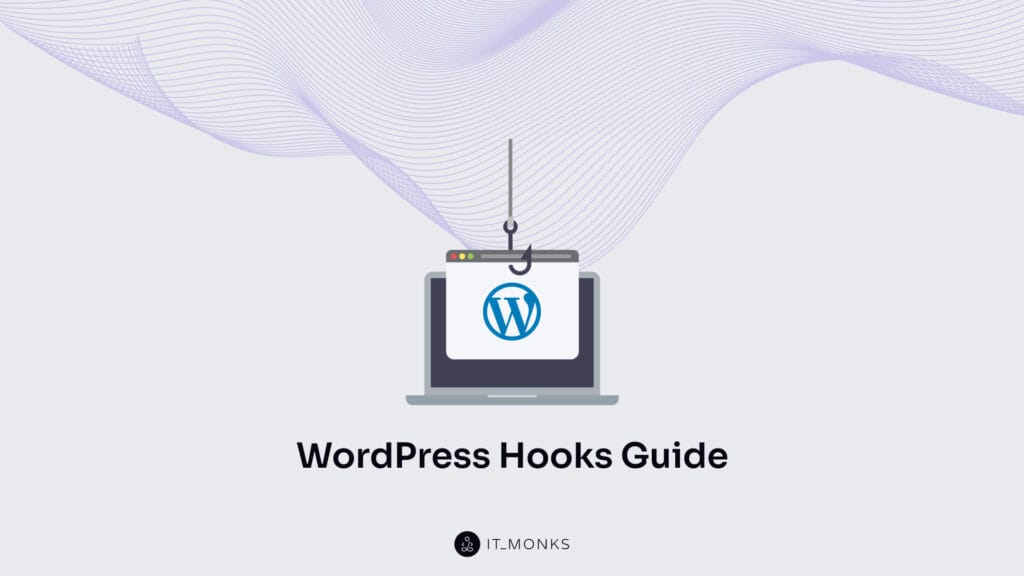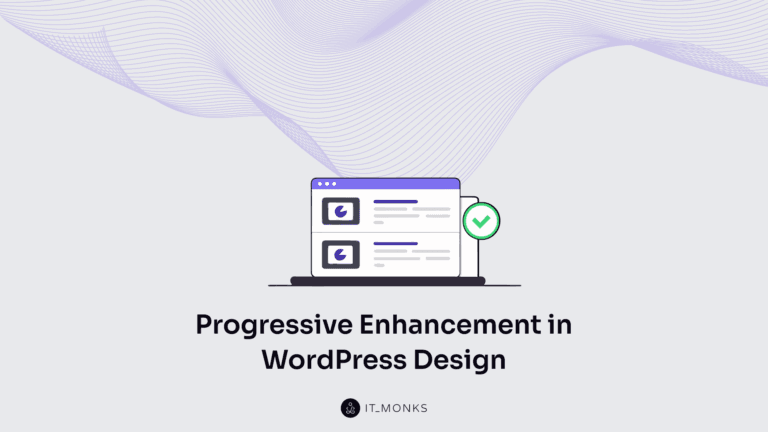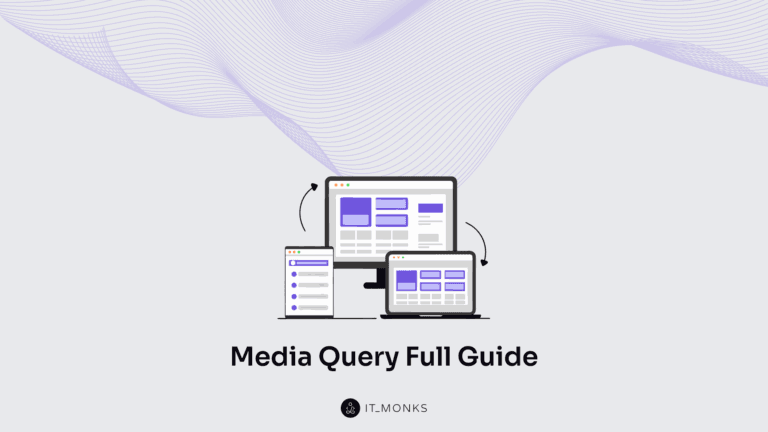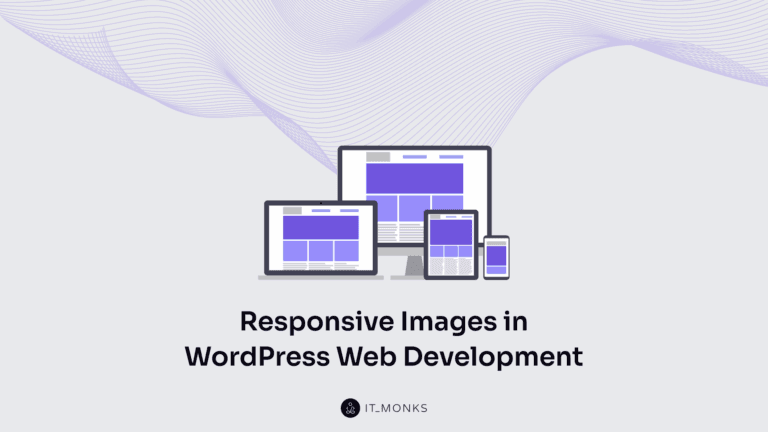WordPress Hooks – Guide for Web Development
Table of Contents

WordPress hooks represent the foundational procedural mechanism through which dynamic execution and controlled customization are orchestrated within a WordPress website’s runtime lifecycle. In the broader scope of WordPress development, hooks act as internal trigger points embedded within the system’s event-driven architecture, enabling developers to register, execute, or override logic, all without modifying core source files.
In WordPress development, hooks serve as declarative connection points that coordinate everything from dynamic content rendering to plugin interoperability. By registering callback functions to specific hooks, developers can extend, override, or enhance default behaviors in a controlled and scalable way.
This guide offers a structured walkthrough of the complete hook system, organized by function type, lifecycle stage, and practical use case. You’ll learn how to define, register, trigger, and troubleshoot hooks, enabling you to control plugin and theme behavior within WordPress development projects.
What are WordPress Hooks?
WordPress hooks are a core feature of the platform, embedded in its core code and runtime logic, that allow developers to register and trigger custom functions at predefined stages of the system lifecycle, without directly modifying core files. They define specific points within the WordPress execution flow where custom functions can be “hooked in” to perform actions or filter data.
WordPress organizes its hook system into two types:
- Actions allow developers to add new operations at predefined points in the WordPress process.
- Filters let developers modify existing data before it is saved or displayed.
Both types of hooks are registered using callback functions that execute at the right stage of the page request.
By acting as predictable integration points, WordPress hooks support modular development, ensure long-term maintainability, and provide a reliable interface for customizing themes, plugins, and underlying execution workflows, making them fundamental to scalable, custom WordPress development.
How Do WordPress Hooks Work?
WordPress hooks work by identifying predefined trigger points in the website’s lifecycle and executing developer-defined callback functions when those points are reached. As WordPress loads core components (such as themes, plugins, or content), it checks for registered callbacks through the add_action() or add_filter() functions. If present, these functions are queued and executed in sequence based on their assigned priority levels.
Each hook can pass arguments to its callbacks, giving developers access to runtime context or the ability to manipulate data dynamically.
This structured, event-driven system ensures that custom code runs predictably and in isolation from core logic. By assigning priority values, developers control the execution order when multiple callbacks are attached to the same hook. This mechanism enables clean, modular development, which is essential for maintaining upgrade-safe, scalable WordPress backend development.
What are the Types of WordPress Hooks?
WordPress hooks come in two core types, action hooks and filter hooks, each serving a unique role in how developers interact with the platform’s runtime behavior. This distinction determines whether a hook is used to execute code at a specific event or to modify data before it’s output or stored.
Action Hooks
Action hooks are event-driven trigger points that allow developers to run custom functions at key moments in WordPress’s lifecycle, such as when a page loads, a post is saved, or a plugin is initialized. These hooks are registered using the add_action() function.
When WordPress encounters an action hook, it executes all associated callbacks in sequence, according to their assigned priorities. Unlike filters, action hooks do not return a value, they’re used to perform tasks like:
- Registering post types
- Loading scripts
- Sending notifications
Because they modify behavior without altering return data, action hooks are ideal for extending functionality in plugins, themes, and site automation workflows, all without changing core files.
Filter Hooks
Filter hooks are used to intercept and modify values as they pass through WordPress’s execution pipeline. Common use cases include customizing post content, modifying settings, or altering plugin output.
Using the add_filter() function, developers attach callbacks that receive a value, optionally change it, and return the modified result. These callbacks are executed in a chain; if one fails to return a value, the entire filter flow is disrupted.
Filter hooks are essential for:
- Changing post titles or excerpts
- Sanitizing form inputs
- Adjusting configuration values at runtime
Because they work directly with return values, filters provide a safe, reversible way to customize WordPress behavior with precision.
What is the Difference Between Action and Filter Hooks?
In WordPress development, action hooks and filter hooks represent two distinct mechanisms for extending the platform:
- Action hooks are used to trigger custom logic at specific points in the execution lifecycle.
- Filter hooks are used to intercept and modify data before it is output, stored, or processed.
The key difference lies in intent and behavior: actions are procedural; they run code but don’t return anything. Filters are transformational; they must return a modified version of the data passed through them.
The table below outlines the key differences between action and filter hooks in WordPress development:
| Aspect | Action Hooks | Filter Hooks |
|---|---|---|
| Purpose | Execute custom code at specific points | Modify and return values during runtime |
| Return Required | No return value expected | Must return a value |
| Primary Use Case | Performing operations (e.g., enqueue, logging) | Altering content/data (e.g., post titles, settings) |
| Trigger Behavior | Fires during an event in the WordPress lifecycle | Applies to a value being processed |
| Function Used to Register | add_action() | add_filter() |
| Chaining Support | Limited to priority-based execution only | Supports sequential value modification (chaining) |
| Side Effects Allowed | Yes, used for side effects | Not intended for side effects |
| Developer Responsibility | Execute logic | Return transformed data |
| Common Scenarios | Sending emails, loading scripts, creating users | Changing text output, modifying options, altering queries |
| Integration Point | Lifecycle events | Data handling pipelines |
Which Hooks Are Most Used in WordPress Development?
In professional WordPress development, specific hooks are consistently used across themes, plugins, and core website customizations. These frequently invoked hooks serve as strategic integration points, enabling developers to inject logic, intercept data, or trigger operations at critical phases of the WordPress lifecycle.
A reliable hook implementation not only ensures modularity and maintainability but also aligns with WordPress coding standards, which promote clean architecture, predictable behavior, and compatibility with future system core updates.
The most common WordPress hooks include:
- init: Fires after WordPress has finished loading but before any headers are sent. (Action)
- wp_enqueue_scripts: Used to enqueue stylesheets and scripts on the frontend. (Action)
- the_content: Filters the post content before it is displayed on the page. (Filter)
- admin_init: Fires when the admin dashboard is initialized. (Action)
- wp_head: Injects code into the <head> section of the site. (Action)
- the_title: Filters the post title before it’s displayed. (Filter)
- login_redirect: Filters the URL a user is redirected to after login. (Filter)
- save_post: Fires when a post or custom post type is saved. (Action)
- pre_get_posts: Alters the main query before posts are fetched. (Filter)
- template_redirect: Fires just before determining which template to load. (Action)
- wp_footer: Outputs content in the footer of the site, right before </body>. (Action)
- comment_post: Fires after a comment is inserted into the database. (Action)
- body_class: Filters the array of CSS classes applied to the <body> tag. (Filter)
Which Hook Attributes Control Execution Behavior?
The execution behavior of WordPress hooks is controlled by a set of core hook attributes that define when and how callback functions are triggered during the runtime of a WordPress website. These attributes shape the logic flow, execution order, and control scope, giving developers precise influence over system behavior without altering core code.
- Priority. Defines the execution order of registered callbacks. A lower numeric priority (e.g., 5) runs before a higher one (e.g., 20). This allows developers to orchestrate precise logic sequences, especially when multiple plugins or themes target the same hook.
- Accepted Arguments. Specifies how many parameters a callback function can accept. This ensures that the callback aligns with the hook’s data context and can accurately extract, modify, or act upon the passed values.
- Callback Function. The function that executes when the hook is triggered. It contains the core logic and acts as the procedural endpoint for developer-defined behavior. Best practices recommend using named functions for clarity and debuggability.
- Removability. Controlled by how the callback is registered. Named functions can be detached using remove_action() or remove_filter(). Anonymous functions, however, are not removable once added, limiting post-registration control.
- Scope of Execution. Determines whether a hook fires in the frontend, admin dashboard, or under specific conditional logic (e.g., only for logged-in users). Developers must implement environmental checks (is_admin(), is_user_logged_in(), etc.) to ensure hooks execute in the correct context.
How Can You Register Hooks in a WordPress Site?
Registering a hook in WordPress means binding a custom callback function to a predefined hook name, a specific event, or data‑processing point in the system. This registration tells WordPress: “When you reach this trigger, execute my logic.” Since the hook architecture supports modular extension, this approach produces clean, upgrade‑safe code that adheres to WordPress coding standards.
To register a hook, you use one of the core API functions: add_action() for an action hook or add_filter() for a filter hook. The registration function takes these key parameters:
- Hook name (string): the specific event or filter point you’re targeting.
- Callback function: the developer‑defined function to execute.
- Priority (optional integer): defines the callback’s execution order relative to others.
- Accepted arguments (optional integer): determines how many parameters your callback will receive.
Understanding where to place your hook registration code is just as important as how you write it. Hook declarations should be aligned with the file and directory structure in WordPress, which determines when the code is loaded relative to the system’s initialization.
Depending on your use case:
- Themes usually place hooks in the functions.php file.
- Plugins declare hooks in the main plugin file or a separate initialization module.
- Custom systems may centralize hook logic within dedicated bootloader or framework directories.
Adding Action Hooks With add_action()
The add_action() function registers a callback function to a specific action hook, enabling WordPress to execute that function automatically at a defined event during the site’s lifecycle. It is the system’s mechanism for allowing developers to inject custom logic into the runtime, without modifying core files.Here’s how to register a function that runs during the wp_footer event:
function add_custom_footer_note() {
echo '<p>Custom footer note from theme or plugin.</p>';
}
add_action('wp_footer', 'add_custom_footer_note');In this example:
- ‘wp_footer’ is the hook name, representing the moment just before the closing </body> tag is printed.
- ‘add_custom_footer_note’ is the callback function that will be executed.
- No priority or argument count is specified, so WordPress uses the defaults (priority 10, no parameters).
Once declared, WordPress stores this registration. When it reaches the wp_footer trigger during rendering, it executes the attached function. This action-based registration supports modular behavior, powering theme extensions, plugin features, and event-based logic across the WordPress website runtime.
Adding Filter Hooks With add_filter()
The add_filter() function connects a callback function to a filter hook, allowing WordPress to pass a value through developer-defined logic, modify it, and return a transformed result. This hook pattern enables data interception without breaking the core flow, which is essential for dynamic output control.
Here’s a simple example of filtering post titles:
function modify_post_title($title) {
return '[Filtered] ' . $title;
}
add_filter('the_title', 'modify_post_title');In this case:
- ‘the_title’ is the filter hook triggered whenever a post title is rendered.
- ‘modify_post_title’ is the callback function that receives the original value, modifies it, and returns the new version.
The filter system chains multiple callbacks in execution order, with each function modifying the data before it’s returned to WordPress for use. This return-based mechanism gives developers tight control over content output, presentation logic, and user-facing data, all without touching core functionality.
Filter registration through add_filter() supports predictable value transformation, empowering theme customization and plugin development with precision and safety.
Where Should You Register Hooks in Your Theme or Plugin?
Hook registrations in a WordPress site must be placed within the appropriate file structure and at the correct phase of the execution lifecycle to ensure callbacks are triggered as expected. Misplacing hook logic, either too early in the load sequence or inside rendering code, can lead to failed executions or erratic behavior.
In themes, hooks go in functions.php or in custom files included during theme setup. This is where you register hooks that control front-end behavior, template logic, or UI-level interaction. For maintainability, many developers centralize hook registration in a separate hooks.php file and include it during theme initialization. Using classes or wrapping the registration logic in conditionals can further improve control and isolation.
In plugins, hooks are generally registered in the main plugin file or within class methods when using object-oriented patterns. The preferred lifecycle point for initiating hook bindings is during the plugins_loaded or init phase, once WordPress core has been fully initialized but before any dependent hooks begin firing. Registration should always be encapsulated, either in functions or class constructors, and never dumped into the global execution flow. This keeps the plugin logic modular and aligned with the broader WordPress development environment.
Across both contexts, hook registration must occur after WordPress core functions are loaded but before the target hook is triggered. Registering hooks within templates, conditionals, or loops, especially during rendering, can cause unstable behavior and undermine the predictability of the runtime environment. Isolating hook logic based on lifecycle timing ensures that the system executes registered callbacks consistently, making plugin and theme development scalable, safe, and synchronized.
How Can You Write Your Own Custom Hooks?
You can write your own custom hooks in WordPress by inserting do_action() or apply_filters() into your plugin or theme code at specific execution points. These developer-defined hooks act exactly like native WordPress hooks, allowing internal or third-party functions to register callbacks through add_action() or add_filter().
When do_action() is used, it defines a procedural trigger that executes attached functions without returning a value. When apply_filters() is used, it exposes a value to be modified and returned through a filter chain.
Custom hooks are placed intentionally in the runtime flow of a plugin or theme to provide controlled injection points. This enables extensible logic, structured plugin integration, and modular architecture. In custom WordPress development, defining these hooks ensures that custom behavior can be added or extended without altering the core logic of a project.
Define Custom Actions With do_action()
do_action() defines and triggers a custom action hook within a WordPress plugin or theme, allowing other code to execute at a specific moment in the execution flow. When this function is called, WordPress checks for any functions registered to the named hook and runs them in the order of their assigned priority.
Here’s a basic example of defining and hooking into a custom action:
// Inside a plugin or theme function
function my_plugin_process_data() {
// Some internal logic
do_action('my_plugin_data_ready'); // Custom action hook
}
// Somewhere else: register a callback to the custom action
add_action('my_plugin_data_ready', 'notify_admin');
function notify_admin() {
// Send an admin notification or log something
}In this example, the my_plugin_data_ready hook acts as a runtime event. When do_action() is called, WordPress automatically executes any attached callbacks, such as notify_admin(). This pattern allows different parts of the system, or even external plugins, to inject behavior into a custom workflow without modifying the core logic.
Define Custom Filters With apply_filters()
apply_filters() defines a custom filter hook by exposing a specific value for external modification and returning the final result. It enables developers to dynamically change content or configuration by passing data through a chain of registered callback functions.
Here’s a real-world usage example:
// Inside your plugin or theme
function my_plugin_get_label() {
$label = 'Default Label';
return apply_filters('my_plugin_custom_label', $label);
}
// Elsewhere: modify the label via filter
add_filter('my_plugin_custom_label', 'change_label_text');
function change_label_text($text) {
return 'Updated Label';
}When my_plugin_get_label() is executed, WordPress passes $label through any callbacks registered to the my_plugin_custom_labelfilter. The change_label_text() function intercepts the value, alters it, and returns the updated version, which is then used in place of the original.
When Should You Use Custom Hooks Instead of Built-In Ones?
Custom hooks are appropriate when a plugin or theme introduces logic, data flows, or lifecycle events that are not addressed by existing WordPress core hooks. They act as clearly defined extensibility points within custom architectures, offering controlled runtime integration and future-proof adaptability.
A custom hook should be implemented in any of the following scenarios:
- The WordPress core does not provide a built-in hook for the specific location in your execution flow, making existing options either structurally insufficient or semantically misaligned.
- Your plugin or theme generates new behavior, such as the completion of an internal API request or a change in internal application state, that third-party code may need to respond to or extend.
- Your codebase entirely owns the logic being executed. Since you control its timing and behavior, you must expose clean and explicit entry points to allow interaction without modifying core logic.
- Relying on a core hook would create unnecessary coupling between unrelated systems, leading to fragile architecture, reduced isolation, and increased maintenance complexity.
- You are developing reusable components, such as a plugin framework or theme engine, where modular extensions must be supported without requiring edits to the core implementation.
Using core hooks to force unrelated behavior can introduce ambiguity, reduce testability, and weaken semantic cohesion. By contrast, defining a dedicated custom hook ensures clarity of scope, precision of timing, and architectural transparency, supporting long-term modularity, improved maintainability, and full ownership of your system’s extensibility model.
How Do You Remove Registered Hooks Safely?
To safely remove a registered hook in WordPress, you must use either remove_action() or remove_filter(), ensuring the removal call exactly matches the original registration. This includes the hook name, the callback function, and the priority. If any of these differ, the removal will fail silently, leaving the callback active during execution.
Both removal functions operate by deregistering a previously bound callback from a specific hook. However, the call to remove a hook must be executed after the hook has been registered. This is why removal logic is typically placed within a core lifecycle hook, such as init, which guarantees that all earlier registrations are in place.
Here’s a concise example of how to safely remove a registered action:
// Register a custom function to run in the footer
function my_custom_footer_message() {
echo '<p>Custom footer message.</p>';
}
add_action( 'wp_footer', 'my_custom_footer_message', 20 );
// Deregister the same function during the 'init' phase
function remove_my_footer_message() {
remove_action( 'wp_footer', 'my_custom_footer_message', 20 );
}
add_action( 'init', 'remove_my_footer_message' );In this example, the remove_action() call precisely matches all aspects of the original add_action(), including the hook (wp_footer), the callback (my_custom_footer_message), and the priority (20). This alignment ensures WordPress can locate and deregister the function before it executes.
If the removal attempt occurs before the hook was added, or if any parameter is mismatched, WordPress will fail to unhook the function, and no error will be shown. Additionally, when dealing with object-oriented code, the same object instance used in the original add_action() or add_filter() call must be passed into the removal function for it to work correctly.
How Are Hook Conflicts Resolved?
Hook conflicts in WordPress are resolved using a priority-based execution model: callbacks with lower numerical priorities execute before those with higher priorities. When multiple functions are hooked to the same action or filter (whether by WordPress core, themes, or plugins), execution order is determined first by the assigned priority, and then by the order in which the callbacks were registered if priorities are identical.
Here’s a simple example that demonstrates how two callbacks interact when attached to the same hook:
// First function adds a footer message
function plugin_one_footer_message() {
echo '<p>Message from Plugin One.</p>';
}
add_action( 'wp_footer', 'plugin_one_footer_message', 10 );
// Second function adds a different message
function plugin_two_footer_message() {
echo '<p>Message from Plugin Two.</p>';
}
add_action( 'wp_footer', 'plugin_two_footer_message', 10 );
// Remove the first message to resolve output conflict
function resolve_footer_conflict() {
remove_action( 'wp_footer', 'plugin_one_footer_message', 10 );
}
add_action( 'init', 'resolve_footer_conflict' );In this example, both callbacks are registered to wp_footer at the same priority level (10). As a result, they execute in the order they were added. If both plugins output conflicting or redundant content, a conflict can be resolved by explicitly removing one of the callbacks using remove_action(), as shown in the resolve_footer_conflict() function.
Alternatively, the conflict can be resolved by assigning different priorities to control execution order:
add_action( 'wp_footer', 'plugin_two_footer_message', 5 );In this case, plugin_two_footer_message() executes before plugin_one_footer_message() due to its lower priority value.
How Can You Detect Which Hooks Fire on a WordPress Page?
Hooks on a WordPress page can be detected by tracing their execution with developer tools or by using logging methods designed for runtime inspection. These approaches reveal which hooks fire, in what order, and what callbacks are attached, providing essential visibility for debugging, optimization, and conflict resolution.
Two widely used tools for real-time hook tracing are:
- Query Monitor: With the Hooks panel enabled, this plugin lists all hooks executed during a page load, along with their priority, execution order, and registered callbacks.
- Debug Bar + Debug Bar Hooks: This tool, with its hook-specific add-on, provides a straightforward visualization of the hook flow and execution chain, making it handy for theme or plugin analysis.
For manual inspection, developers can use the all pseudo-hook to observe every hook that fires. This technique is effective when automated tools are unavailable or when deeper control is required during analysis.
// Log every hook that runs during the request
add_action( 'all', function( $hook_name ) {
error_log( 'Fired hook: ' . $hook_name );
});This method writes each hook name to the debug log, making it easier to track execution flow across theme and plugin boundaries. It should be used only in development environments, as it introduces significant overhead and noise in production.
Together, these methods help developers identify what runs when, a critical part of maintaining modular, predictable, and performance-optimized WordPress systems.
Use Query Monitor to Trace Hooks
Query Monitor is a powerful diagnostic tool that visualizes the full list of WordPress hooks triggered during a page load. After installation from the Plugins menu, it adds a menu item to the WordPress admin bar. The Hooks tab displays:
- All fired hooks during the current request
- Each hook’s registered callbacks
- Assigned priority values
- Execution order in real time
To test the hook trace, register a sample function using a distinctive priority:
// Attach a callback to a known action for inspection
function qm_trace_example() {
// Placeholder logic
}
add_action( 'template_redirect', 'qm_trace_example', 15 );After refreshing the page, qm_trace_example will appear under the template_redirect hook in the Hooks panel. This confirms the function’s execution and allows developers to inspect relative order and potential overlaps.
Enable Debug Bar + Hooks Add-on
The Debug Bar plugin, when paired with the Debug Bar Hooks add-on, offers a lightweight yet powerful interface for viewing all hooks that fire during a WordPress page request. Once both plugins are installed and activated via the admin dashboard, a new Debug item appears in the top admin bar, featuring a Hooks Fired tab.
That panel reveals:
- A chronological list of all fired hooks
- Attached callback functions
- Priority values (when available)
- Lifecycle order from top to bottom
This tool is handy when custom hooks are used or plugin interactions are complex. Because it doesn’t require deep configuration or specific theme support, it integrates seamlessly into most development setups.
To test the output, register a sample callback:
// Register a function to appear in Debug Bar Hooks output
function db_hooks_example() {
// Simple stub for validation
}
add_action( 'wp_footer', 'db_hooks_example', 20 );Once loaded, db_hooks_example will be listed under the wp_footer hook within the Hooks Fired section. This helps confirm the execution of functions, the sequencing of priorities, and the overall lifecycle positioning, all of which are critical for controlled, traceable development.
How Does the All Hook Track Every Action and Filter?
The all hook in WordPress is a special pseudo-hook that fires on every action and filter executed during a page request. Unlike typical named hooks, all is a system-level interceptor that gives developers full visibility into the execution sequence of every registered hook, both core and custom, in real time.
When you register a callback using add_action( ‘all’, ‘your_callback’ ), WordPress automatically passes the name of the currently firing hook to the callback via the $hook_name parameter. This mechanism enables precise tracking of hook activity throughout the page lifecycle.
Here’s a basic implementation that logs every hook:
// Debug-only: Track all hook executions during a request
function log_all_hooks($hook_name) {
error_log("Hook fired: " . $hook_name);
}
add_action('all', 'log_all_hooks');This setup logs every hook name triggered during a page load to the error log, providing a chronological execution map. It’s beneficial for diagnosing missing hooks, tracking plugin or theme behavior, and resolving callback order issues.
However, because the all hook executes whenever any hook is fired, it can slow performance and generate a massive volume of output. It should only be used temporarily in a local or WordPress development environment, never in production.
What Are the Best Practices for Hook-Based Development?
Hook-based development requires adherence to key practices that ensure maintainability, compatibility, and execution safety across WordPress plugins and themes. Each best practice supports modular architecture, prevents conflicts, and improves lifecycle clarity in both simple and complex codebases.
Use Named Functions or Class Methods
Callbacks must be registered with named functions, never anonymous closures. This allows them to remain unregistered or to be inspected later, which is essential for debugging and modular design.
function my_plugin_prefix_output_notice() {
echo '<div>Notice</div>';
}
add_action('admin_notices', 'my_plugin_prefix_output_notice', 10);
// Can be removed later
remove_action('admin_notices', 'my_plugin_prefix_output_notice', 10);This pattern ensures full control over callback management throughout the execution lifecycle.
Prefix or Namespace All Function Names
Hooks should be scoped using plugin- or theme-specific prefixes to avoid global namespace collisions, especially when multiple components use the same WordPress hook.
function my_plugin_prefix_customize_title($title) {
return '[Modified] ' . $title;
}
add_filter('the_title', 'my_plugin_prefix_customize_title');Prefixing guards against function name conflicts in shared environments or when multiple plugins interact.
Assign Explicit Priorities
Hooks should be registered with clear priority values to control execution order. Lower numbers run earlier. Always assign a value when execution sequence matters.
add_action('wp_footer', 'my_plugin_prefix_first_function', 5);
add_action('wp_footer', 'my_plugin_prefix_second_function', 20);Explicit priorities prevent unpredictable behavior when multiple callbacks compete on the same hook.
Register and Remove Hooks in the Right Phase
Plugins should bind hooks after WordPress loads, typically inside plugins_loaded, init, or similar safe lifecycle phases. Hook removal must also occur only after the callback has been registered.
add_action('plugins_loaded', function () {
remove_filter('the_content', 'some_callback', 10); // Safe timing
});This timing guarantees the hook has already been added, preventing no-op removals.
Expose Custom Hooks for Extensibility
Plugins should expose their own integration points using do_action() or apply_filters() to allow third-party extensions and modular control.
function my_plugin_prefix_save_data($data) {
do_action('my_plugin_data_saved', $data);
}This enables clean separation of logic and creates a stable surface for external components to hook into.
Avoid Conditional Hook Registration in Uncontrolled Contexts
Hooks should not be registered inside request-dependent conditionals or template logic (e.g., inside if ( is_single() )). This leads to inconsistent availability and breaks removal logic.
// Do not do this inside templates or dynamic request conditions
if ( is_single() ) {
add_filter('the_title', 'my_plugin_prefix_change_title');
}Instead, register conditionally inside functions that are consistently called in the right context, like template_redirect or init.
Contact
Don't like forms?
Shoot us an email at [email protected]

Send a Project Brief
You need to load content from reCAPTCHA to submit the form. Please note that doing so will share data with third-party providers.
More InformationYou are currently viewing a placeholder content from Turnstile. To access the actual content, click the button below. Please note that doing so will share data with third-party providers.
More InformationYou are currently viewing a placeholder content from Facebook. To access the actual content, click the button below. Please note that doing so will share data with third-party providers.
More InformationYou are currently viewing a placeholder content from Instagram. To access the actual content, click the button below. Please note that doing so will share data with third-party providers.
More InformationYou are currently viewing a placeholder content from X. To access the actual content, click the button below. Please note that doing so will share data with third-party providers.
More Information


